Phnom Penh and Siem Reap are known for being the most important tourist hubs of Cambodia. Sihanoukville is famous for being the commercial heart of the country, whose development is happening at full steam right now with a lot of Chinese investment being injected in the city’s economy. Battambang, on the contrary, is a quiet town not suffering from any sort of pressure because of any superlative titles. It has got the privilege of being a lovely and almost forgotten town, with all the positive things that precisely being ‘forgotten’ brings to a town. Read more to know what to do in Battambang, Cambodia’s forgotten town.
We spent a few days there and realised that we quickly adapted to the rhythm of the town and did not feel to move along. It could have been its architecture (Battambang has retained a lot of the French colonial era), it could have been the lively markets, the delicious food or everything else that one can visit only a few kilometres away from the village. Battambang has got enough points of interest to keep one around for a couple of days.
The Market at Psar Nat
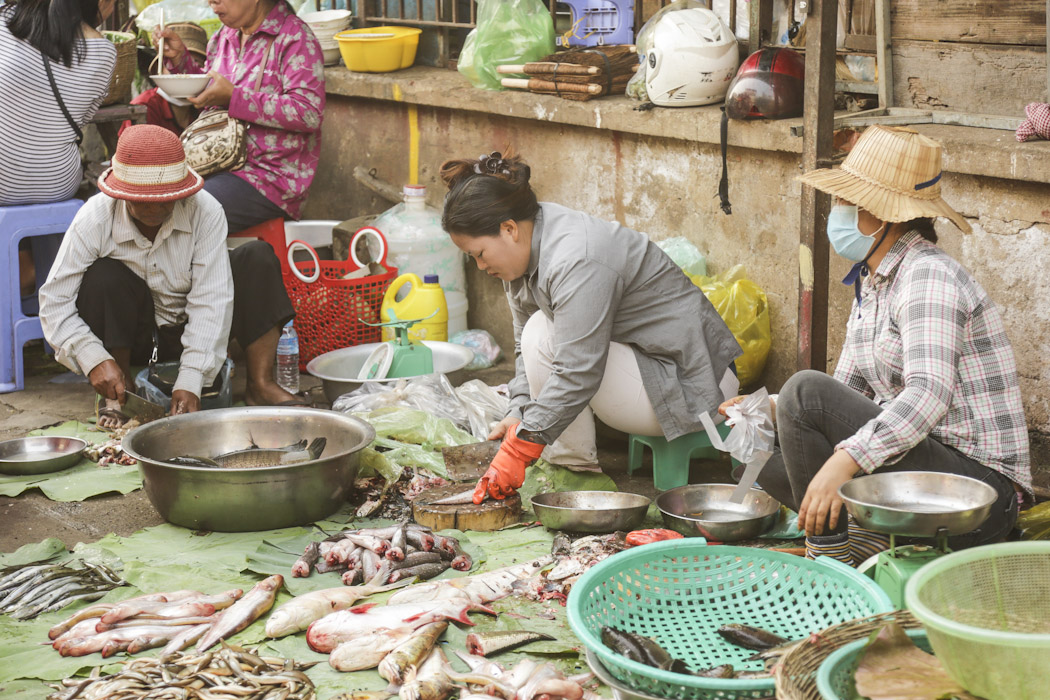
It is the place to buy fresh fish, meat, vegetables or fruit. Later in the afternoon, many stalls with food come join the market. Besides the usual grilled stuff (chicken or pork), you will also find a lot of exotic things, such as grilled frogs! There is also a stall with all types of insects, like giant spiders or cockroaches. Our favourite was the stall with desserts, where many banana leaf wraps contained delicious sticky rice sweets with banana or coconut. This area is very lively until the early evening, when suddenly (around 21h00), the small mobile stalls start disappearing as quickly as they appeared.
Phnom Banan
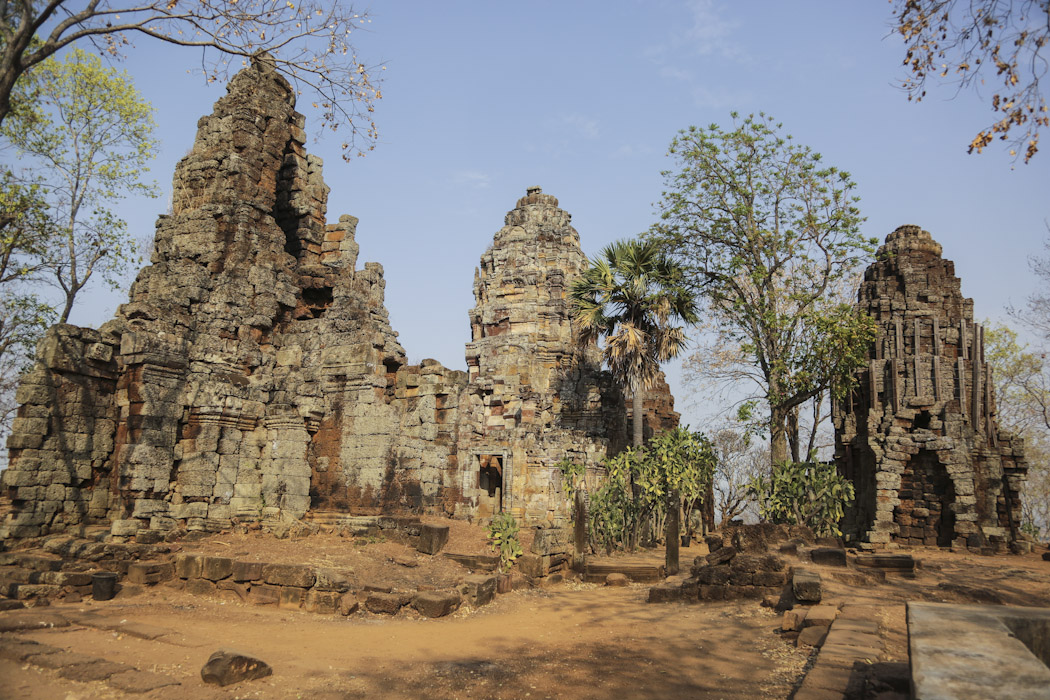
At the bottom of the hill where the temple is located, there are a couple of restaurants and places to rest by the baray (an artificial body of water, common in the architectural style of the Khmer Empire). It is also here that the ticket booth is located and where you will pay the 2 dollars entry fee. Phnom Banan is not just another Khmer temple, it looks like a small version of Angkor Wat. But before you reach the five impressive towers on top of the hill, you need to cope with the steep staircase and its almost 300 steps. Alongside the steps don’t miss the statues of the two nagas (which are half-divine creatures in the Indian mythology, characterised by being partly human and partly snake).
The Killing caves of Phnom Sampeau
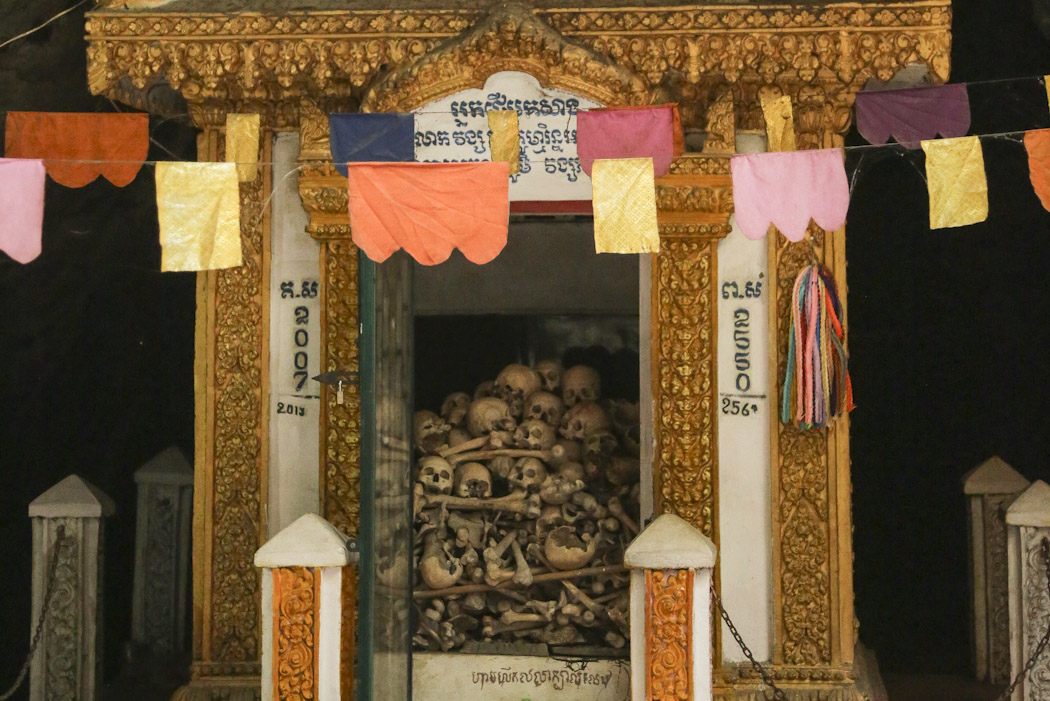
Get a ride with a tuk-tuk or a motorcycle to the south of Battambang. Phnom Sampeou is only 12 kilometres away from the city centre and has enough to keep you busy for an entire afternoon. Start by buying the entrance ticket (2 dollars) and head to the top of the hill (a one and a half hour hike) until the Killing Caves, to see another place where the Khmer Rouge committed mass murders and then hid the victims’ bodies by pushing the corpses down into the depths of these caves. Nowadays a shrine exhibiting bones and skulls serves as a memorial to the victims.
Phnom Sampeau Temple
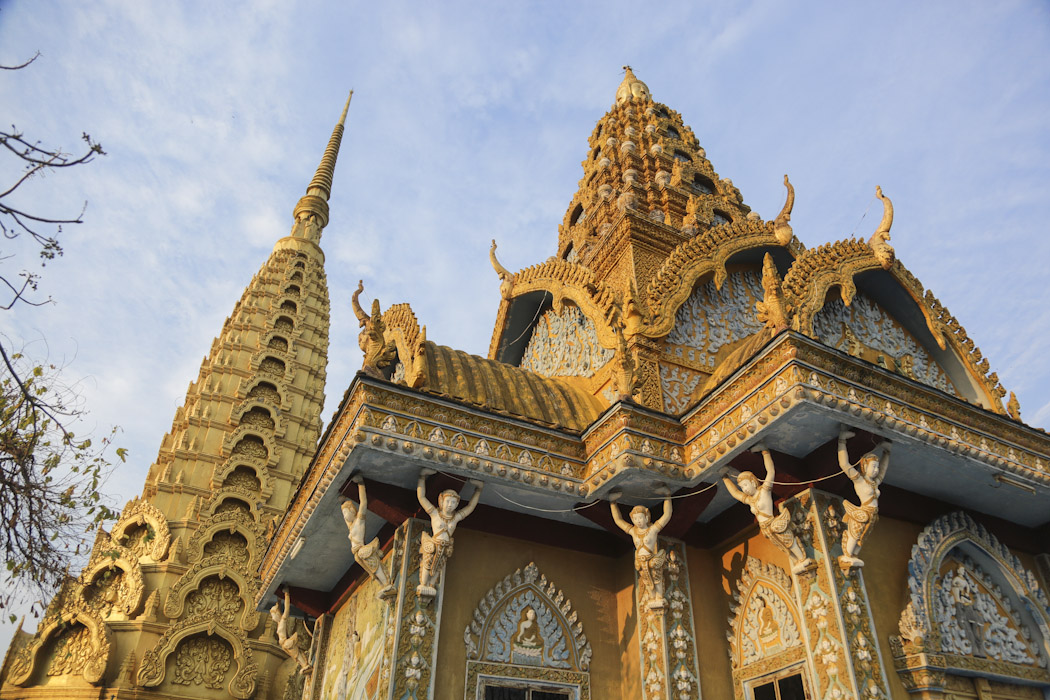
Follow the path up the hill and you will eventually reach the Wat Sampeou temple. It is easily recognisable by its golden towers beautifully decorated. The temple, as well as the views from there into the rice plains, are stunning. Visitors can explore the temple at ease and stay as long as desired.
Monkeys at Phnom Sampeau
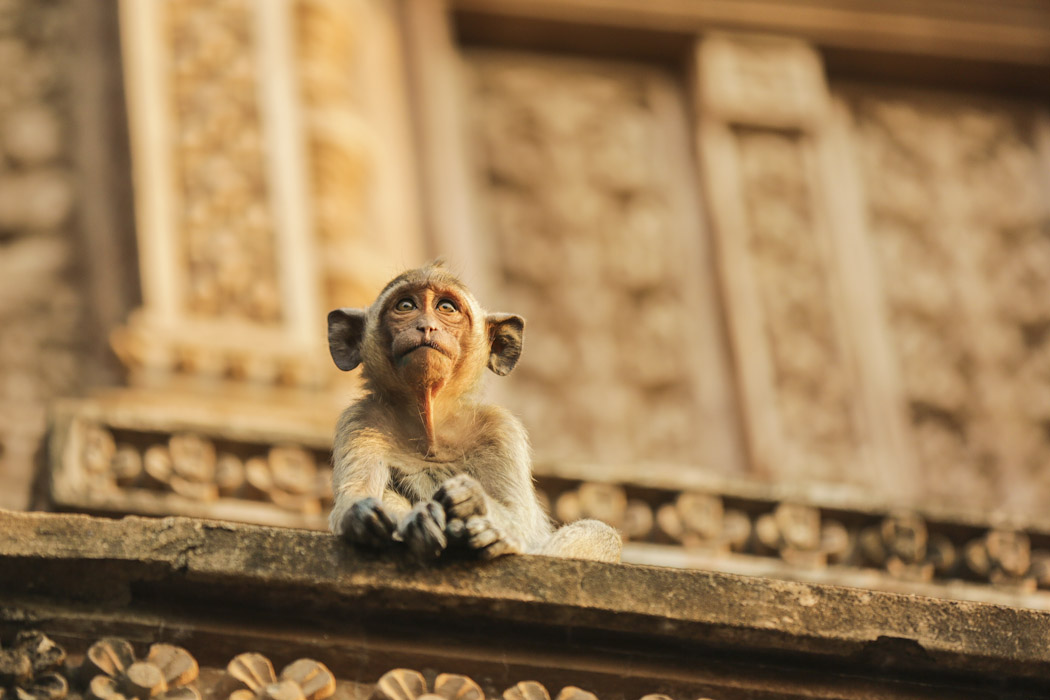
The community of monkeys around the area of the temple is dense and sometimes they can be nasty, especially if you are carrying food or if they have infants and feel they are threatened by the visitors. Therefore prudence is required and it is also good to remember that these animals remain wild, even if some tourists insist on feeding them.
The Bat Caves
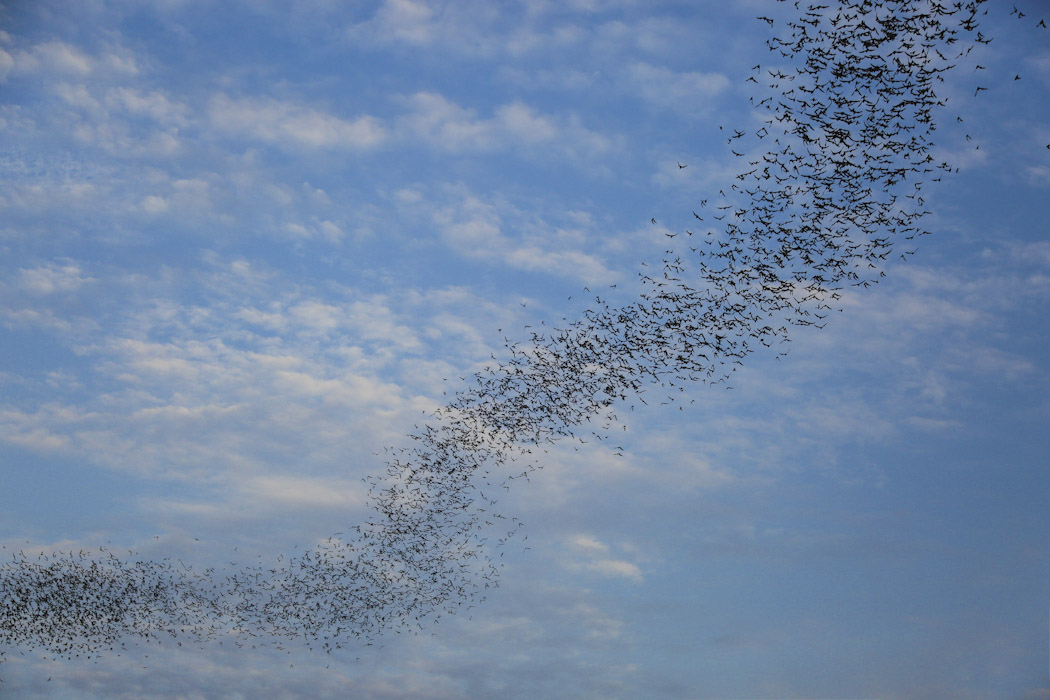
Don’t get distracted with the monkeys, or else you risk missing the swarm of millions of bats exiting one of the caves at the entrance of the Phnom Sampeau site. This natural wonder happens daily at around 17h30 when an endless black stream forms all of a sudden. It is a massive number of bats that comes out of the cave, awaken from their day sleep to hunt during the night. It is impressive how the stream keeps coming out of the cave for at least 30 minutes. We heard one of the guides saying that before the colony of bats leaves the cave, one bat comes outside to check the hazards. If he finds none, he goes inside and gives the ok for the group to come out.
Wat Ek Phnom
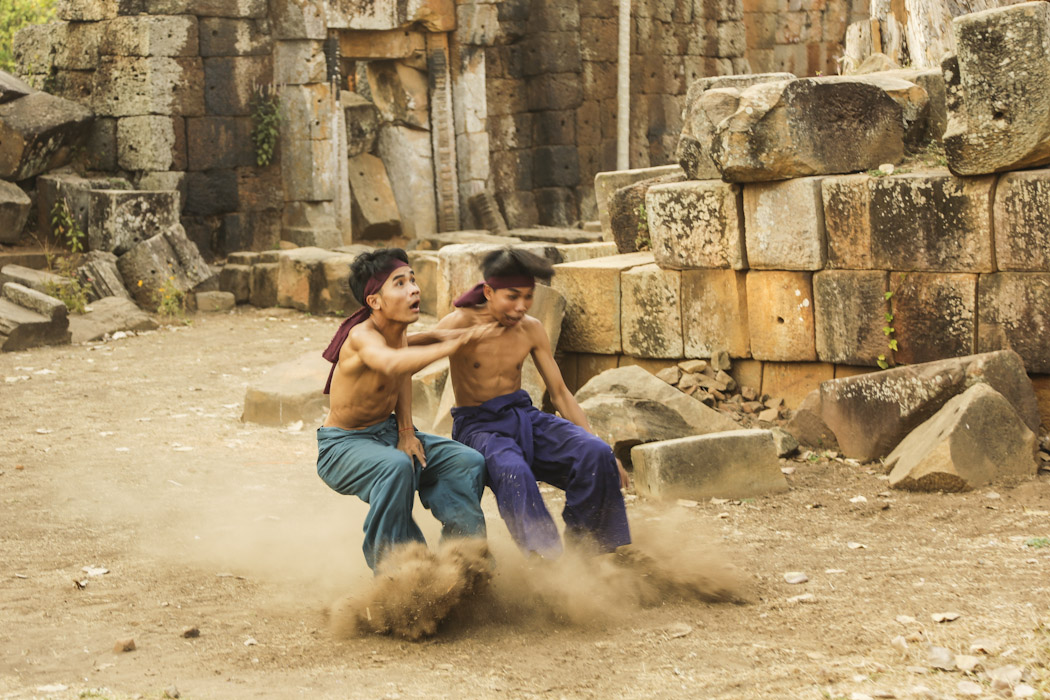
Wat Ek Phnom is located only 10 kilometres to the north of Battambang. It was first built as a Hindu temple in the 11th century. More recently, a Buddhist pagoda was added to the site as well as the statue of a giant Buddha. At the time of our visit, a group of students was filming the scene of a movie there. It was a funny moment seeing the young boys being scared by nothing. A figure of a demon will probably be added afterwards in the post-production.
Rice paper at the Pheam Ek village
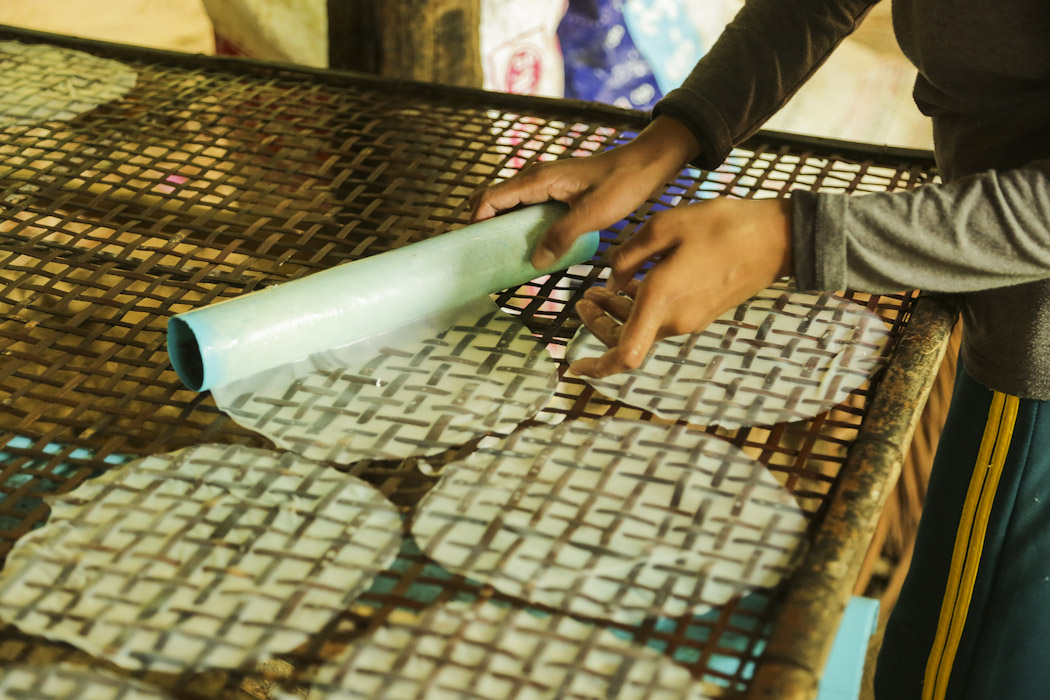
On the way to the Wat Ek Phnom, you should stop in one of the villages to see how families are still traditionally producing rice paper. We couldn’t help but ask ourselves why every other house was making rice paper here, in this particular area. The reason is simple, Battambang district is the main rice producer of Cambodia. Rice paper is used to make spring rolls, therefore its demand is quite high. Though there are factories producing it in Cambodia, in Battambang there are still many families making a living off this manual process.
We visited one such family and were surprised that there were only women (very young girls actually) working on this process. ‘Men are working in the rice fields’, they explained to us. The most experienced and older woman, who was hardly 30 years old, stood sweating next to the stove where she steamed the thin crepe-like dough, one after the other at an incredible speed. They are able to produce between 1,500 to 2,000 round pieces of paper rice.
The dough is made with broken rice which they leave to soak for many hours. When the water gets white and thick, they strain the rice through a cloth. It is this thick white dough with a little bit of salt that is used to steam and make the edible paper. Her movements are mechanic, she has been doing this for a very long time. She leaves the paper rice disk hanging on a roll and another girl (a teenager in her 13’s) gets the roll and spreads the disk on a bamboo frame, which, once it is filled with around 50 disks, gets out into the sun to solidify for around two hours.
Rice wineries
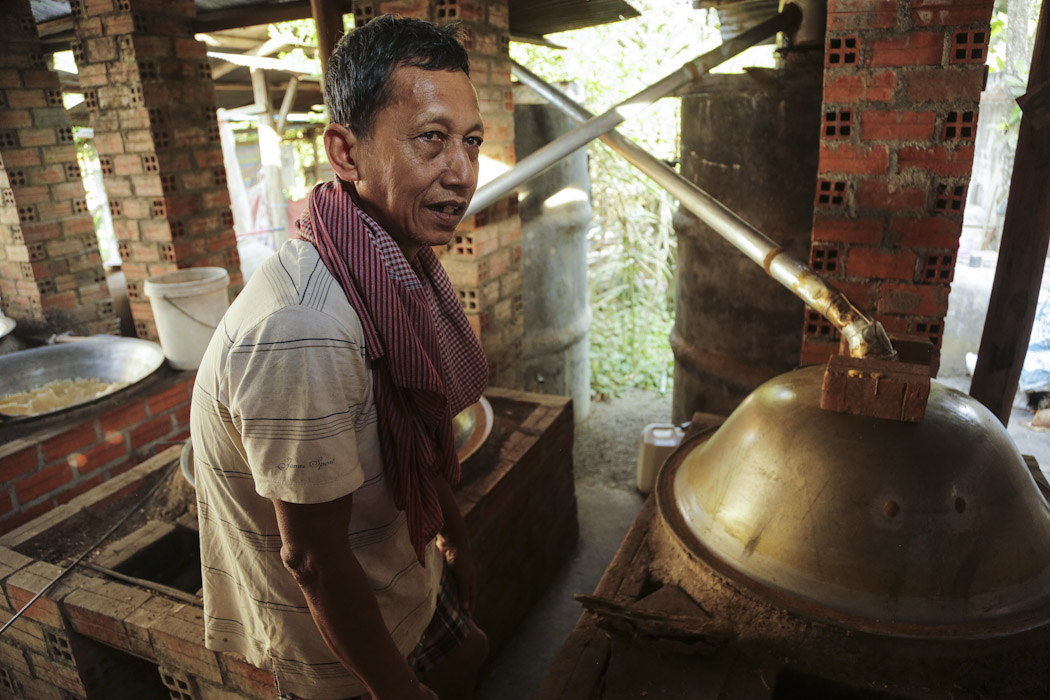
Mao is a homemade rice wine brewer. He was proud to show us his homemade distillation equipment and explain the process to us. Rice wine is probably Cambodia’s most popular alcoholic drink and it is produced mainly by amateur brewers. In order to accelerate the fermentation process, a homemade yeast is added to the rice. Mao keeps his yeast recipe as a secret, but it is quite possible that it contains pepper, cardamon, coriander grains and ginger, for flavour. The fermented rice is then left to dry and will be distilled twice or three times in order to reach an alcoholic percentage of 18 to 25 degrees.
Cooking classes
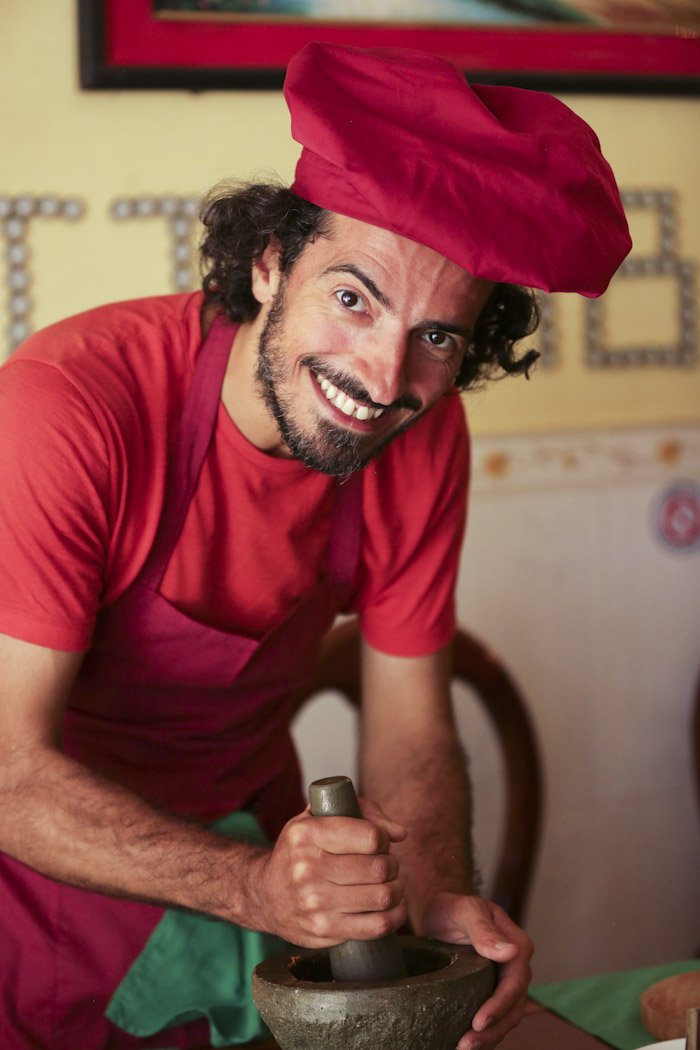
Jorge hasn’t resisted the temptation of subscribing for a cooking class at the Coconut Lilly! He couldn’t believe his luck when he saw there was still enough place for him to join me on the course! He still tried to sacrifice himself by saying that someone needed to take the photos, but no way we would like him to miss the chance to learn some Cambodian recipes! Three hours of cooking to learn how to prepare the Cambodian dish Fish Amok, but also fried spring rolls, green mango salad and a coconut dessert! All dished ended up being delicious, including the ones Jorge cooked! 🙂
Bamboo Train
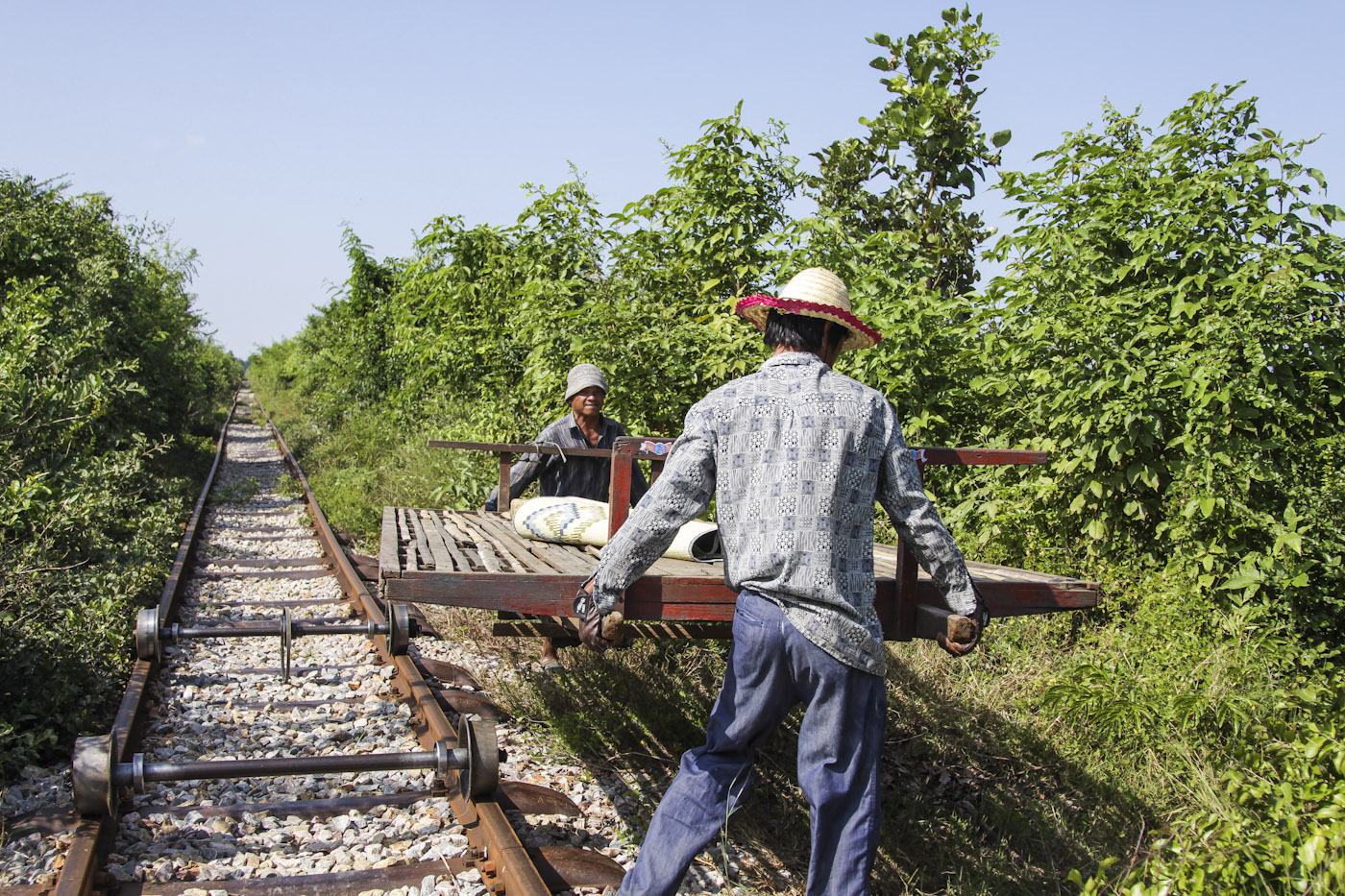
After visiting the Phnom Sampeau site, near Battambang, head to the entrance of the site, near the massive rock, where all the cafés and bars are located. These bars offer first-row seats for the spectacle that happens at around 17h00, daily. A swarm of millions of bats exits the caves located in the rocks of the Phnom Sampeau site. This natural wonder happens daily, when an endless black stream forms all of a sudden. It is a massive number of bats that comes out of the cave, awaken from their day sleep to hunt during the night. It is impressive how the stream keeps coming out of the cave for at least 30 minutes. We heard one of the guides saying that before the colony of bats leaves the cave, one bat comes outside to check the hazards. If he finds none, he goes inside and gives the ok for the entire group to come out.


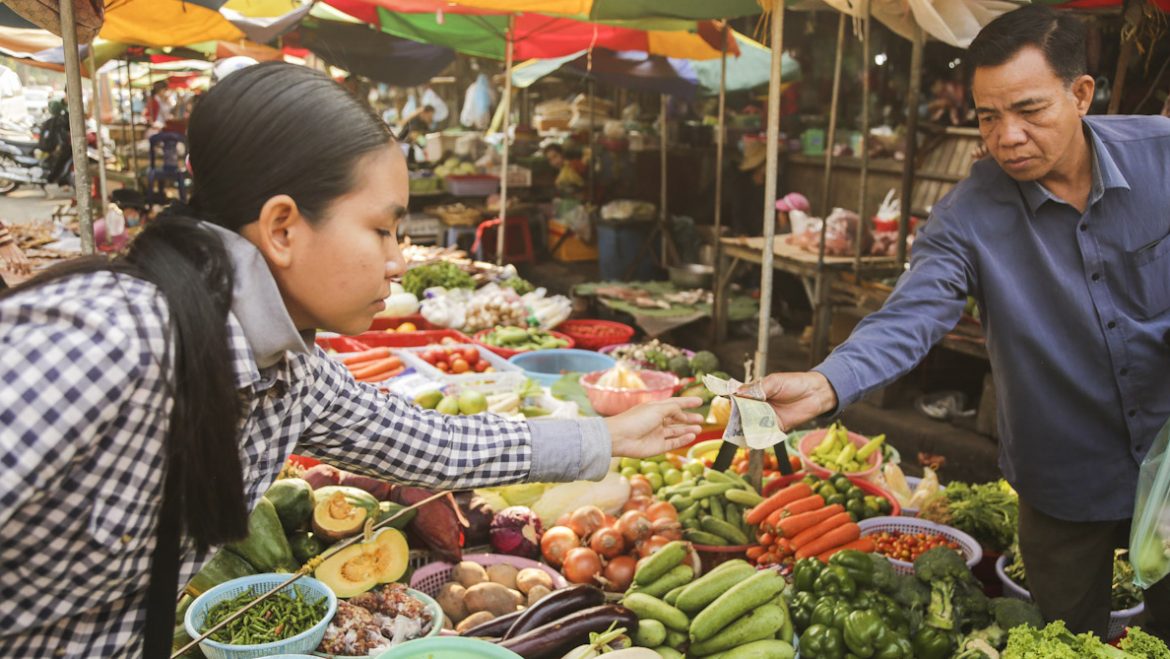





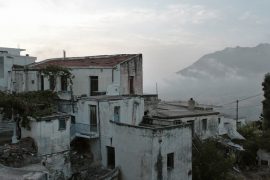


1 Comment